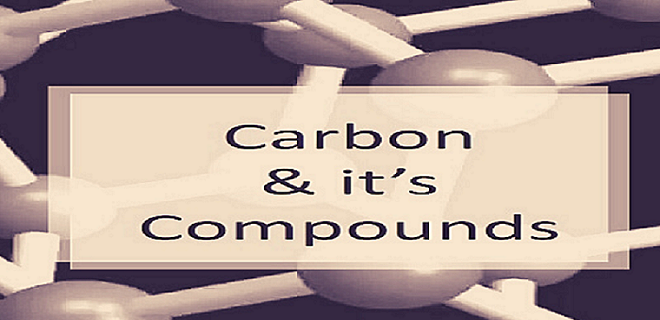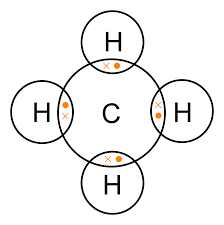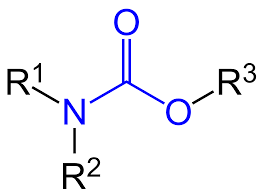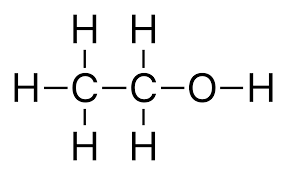Top 50 Questions of Carbon and its Compound Lesson
 Post On.
Post On.  Post On.
Post On. Answer: C3H4
Answer: C2H4 and seven bond
Answer: Acetic Acid
Answer: Acetic Acid
Answer: Butane
Answer: Ca2+ and mg2+
Answer: 78 degree C
Answer: Easter
Answer: Ethyl alcohol
Answer: Methane structure and Hydrogen fluoride

Answer: CHC3(CH2)4CH3
Answer:

Answer: Reaction with hydrogen.
Answer: Reaction with oxygen
Answer: When one kind or group of atoms replace some other atom.
Answer: That Hydrocarbons in which the valency of carbon is satisfied by single bonds
Answer:

Answer:

Answer: Ketone
Answer: They are following:
1. (-Cl) Halogen (Chloro)
2. (-OH) Alcohol,
3. (-COOH) carboxylic acid
Answer: Methanal HCHO
Answer: Methanoic acid.
Answer: A long chain of fatty acids with sodium or potassium salt. It's RCOONa or RCOOR as A molecular formula.
Answer: The other atoms than C and H bonds are to be heteroatoms.
Answer: The binding molecules have weak force and need less energy to break the force of Bonding therefore.
Answer: Isotope- similar in proton number but differential in neutron number.
Answer: Those atoms which are added to a reaction to speed up chemical reaction without losing spare Energy and without disturbing the structure are known as catalysts.
Answer: Below mentioned are the properties:
(i) Combustion reaction
(ii) Substitution reaction
(iii) Substitution reaction
Answer: When unsaturated hydrocarbon combines with another substance to make a new compound..
Answer: Uses of ethanol are: (i) Manufacturing paints (ii) Cough syrup (iii) Alcoholic drinks etc
Answer: With the help of dehydration method when sulphuric acid concentrates within the reaction of ethanol into ethene
Answer: Methanol and formaldehyde is toxic and carcinogenic and even causes blindness
Answer: It is a process of bonding of two similar atoms in different conditions that can only happen in carbon and silicon.
Answer: The method of forming soaps, in which potassium and sodium salts of long chains fatty acid through which esters with organic base react with each other and forms alcohol and soap.
Answer: When propanol reacts to propanoic acid in the presence of sulfuric acid to give propyl propanoate an ester compound.
Answer:Alcohol is consumption but not denatured means adding one or more chemicals to it to making alcohol so not to drink is known as denatured
Answer:Hydrogen gas evolved and reaction between ethanol with sodium gives sodium ethoxide is C2H5O-Na+
Answer:Those element or compound having similar molecular formula but different structural formula are called isomerism.
Characteristics of isomers are:
A. They differ in structural formula,
B. They differ in melting point,
C. They differ in boiling point,
D. They differ in solubility in the same solvent.
Answer:
Esterification: Ester is formed when alcohol reacts with carboxylic acid within H2SO4 concentration presence.
Saponification: When an ester reacts with acid to make alcohol
Uses of saponification and esterification:
(i)
Esters are used in cold drinks,
(ii) Ice cream
(iii) Perfumes and
(iv) As artificial flavouring agents(v) Saponification process is used in the manufacture of soaps.
Answer: Merits:
1. Easily soluble in hard water.
2. More mixable than soap.
Demerits:
1. Expensive in price
2. Non-biodegradable, that is why water pollution
Detergents are suitable for hard
water having Mg2+ and Ca2+ ions.
Answer: A group of particular compound with the same functional group of Elements properties
Characterstic of homologous series are:(i) Common formula
(ii)Common difference of -CO2
(iii) Different in molecular mass
(iv) Similar chemical qualities
Answer: Actions of soap
1. Soap contains hydrophobic part which anions are soluble n grease and water
2. Reduces the surface tension of water
3. Wet the clothes with enough water
4. Rub or scrub the cloth to pull grease away from the spot and broken into many
smaller droplets
5. Droplets mixed with water forming lather or emulsion
6. Red position of droplet on the cloth and rinse with water to away the droplets
Answer:
Reactions:
A. C2H5OH ----------> H2C = CH2
B. CH3 - CH3 +7/2O2 -------> 2CO2 + 3H2O
C. CH
2 = CH2 + H2----------> CH
3 - CH3
In which compounds are
● A= Ethanol
● B= Ethene
● C= Ethane
Answer:
Reaction processes
A. 2CH3COOH + 2Na --------> 2CH3COONa + H2
B. 2CH3COOH + CH3OH ------------> CH
3COONa + H2O
C. 2CH3COOH + CH3OH --------------> CH
3COOCH + H2O
D. CH3COOCH3 +NaOH -------------> CH
3COONa + CH3OH In which
● R =Sodium acetate ( sodium salt of ethanoic acid)
● C = Ethanoic acid
● A = Methanol
● S =Ester (methyl acetate)
Answer: When acid and alcohol react, it becomes an esterification reaction. Given the alcohol upon oxidation with alkaline KMnO4 gives C
2H4O4,
Means the alcohol is ethanol and carboxylic acid is ethanoic acid which gives the ethyl ethanoate.CH3COOH + CH3CH2OH ------>
CH3COOCH2CH3(
it is value of X)
Answer:
Points to be noted
1. Calcium and magnesium does not form lather in hard water
2. More soluble in water
3. Not making scum on clothes.
Answer:
| Saturated Hydrocarbon | Unsaturated hydrocarbon |
|---|---|
| single bonds | double and triple bond |
| Burns with a blue, non-sooty flame | Burns with yellow sooty flame |
| Low solubility in water | Low solubility in water and can dissolve in nonpolar organic solvents. |
| Obtained from fossilized plant and animal materials. | From plants (pigment, waxes, proteins etc.) |
| Less reactive | Addition reaction property |
| eg: Methane , Ethane. Hexane, Butane, Pentane | eg:Ethene, Benzene, Propene, Butadiene, Acetic acid etc. |
Answer: Reaction of alcohol and acid with each other formed ester as the reaction product. Carboxylic acid (such as hydrochloric acid and sulfuric
acid) esters are like RCOOH within the reaction with alcohol , that is why
this process is called esterification.
Uses of esterification are
(i) Fragrant odours such as in essential oils food flavouring cosmetics and in perfumes.
(ii) Naturally in pheromones.
(iii) Organic solvent
(iv) Fatty acid esters of glycerol is occurring naturally in fats and oils.
(v) Polyesters (in the process of making clothing).
(vi) Also used in soaps and detergent
Answer:
| Soap | Detergent |
|---|---|
| Made up of natural ingredient | Made up of synthetic ingredient |
| Biodegradable | Non- biodegradable |
| Made from animal and plant fat and alkaline specification method | Are carbonic compounds which are not alkaline means from petrochemicals |
| Are sodium or potassium salts | Are ammonium or sulfonate salts |
Answer:
Following are.
(i)CO
2 and H2O would release by burning in air.
(ii)Liberation of H2 during the reaction with sodium
(iii)Ethene got converted during H2SO4 present.
Ziyyara is best Online tuition website, we provide online coaching classes for 1st to 12th grade CBSE IGCSE ICSE & online language classes globally such as Online English Language, Online Arabic Language, Online Spanish Language, Online German Language, Online French Language, Online Hindi Language, www.ziyyara.com is an online tuition & language website teaching students & professionals online.